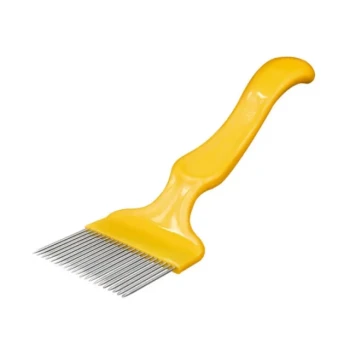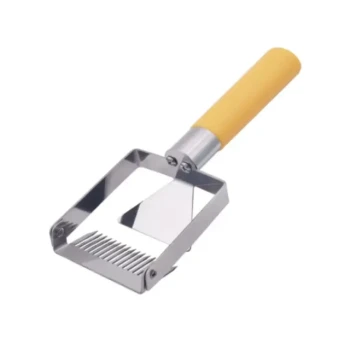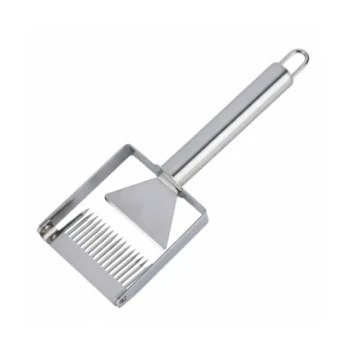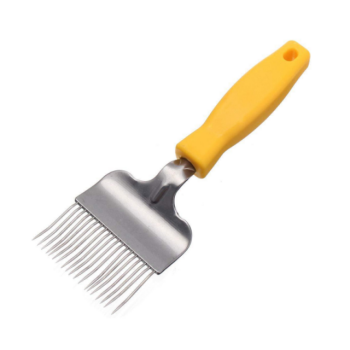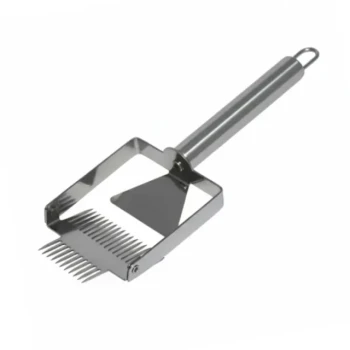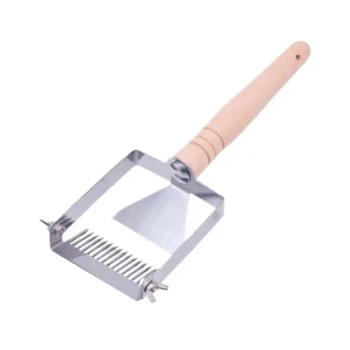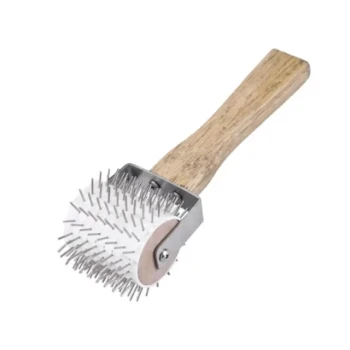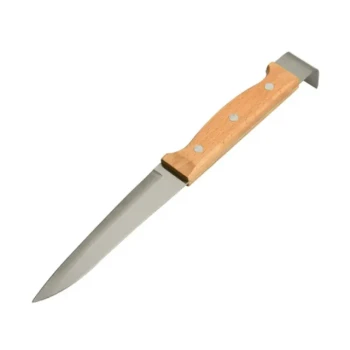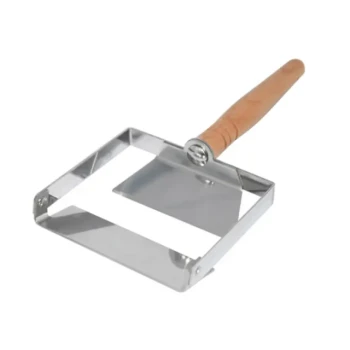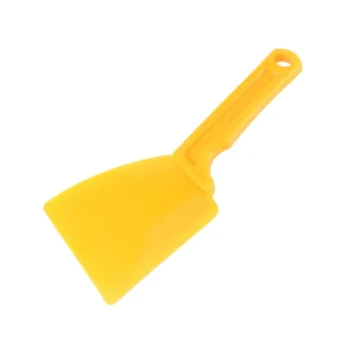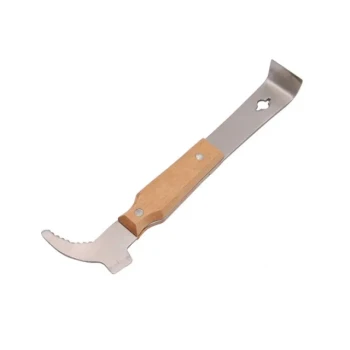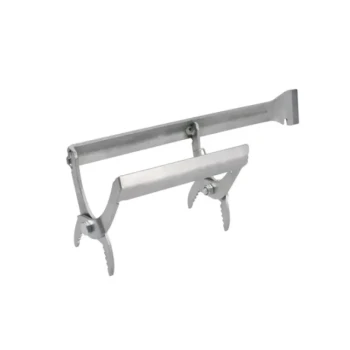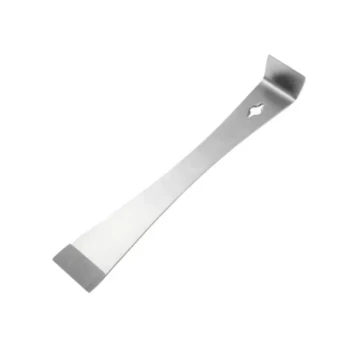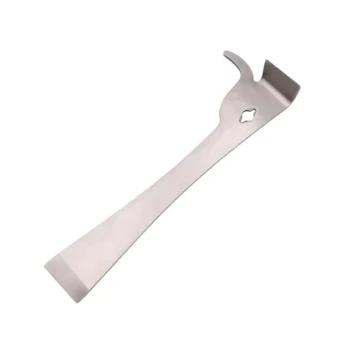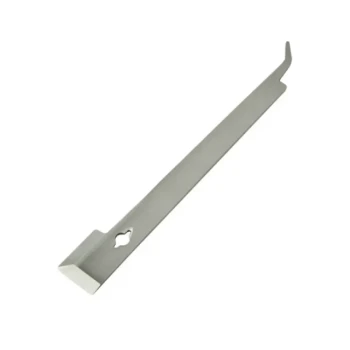An uncapping fork is a specialized beekeeping tool used to manually remove the thin wax layer, or "cappings," from a frame of honeycomb. This process is the essential first step before honey can be removed from the comb in a centrifugal extractor. While its primary function is for honey harvesting, it also serves critical secondary roles in hive inspection and management.
The uncapping fork is valued not for speed, but for its precision and versatility. It is the superior tool for minimizing waste and handling imperfect combs, making it an indispensable instrument for both beginners and experienced beekeepers who prioritize thoroughness over sheer volume.
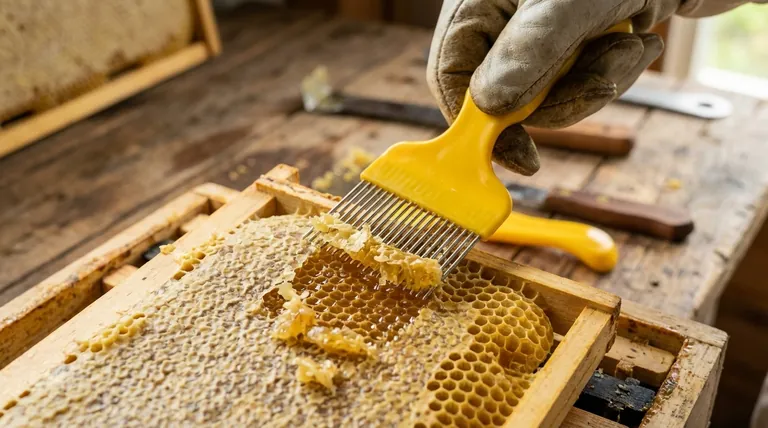
The Primary Function: Honeycomb Uncapping
The main goal of uncapping is to expose the liquid honey stored within the hexagonal wax cells. The fork accomplishes this with a distinct and gentle technique that sets it apart from other uncapping tools.
How It Works: The 'Picking' Motion
Unlike an uncapping knife, which slices off the entire top layer of wax in a single pass, a fork works on a smaller scale. The tines of the fork are slid just underneath the wax caps of the cells. With a slight flick or lifting motion, the user picks the cappings off, exposing the honey beneath.
Why It's Less Intrusive
This picking motion is significantly less intrusive than slicing. A knife can sometimes cut too deep, removing not just the cap but also the top portion of the wax cell wall, which results in more honey being lost with the cappings. The fork precisely targets only the cap, leaving the comb structure intact and minimizing waste.
The Ideal Use Case: Uneven Frames
A knife requires a perfectly flat, even surface to work effectively. However, bees rarely build a perfectly uniform comb. The uncapping fork excels where knives fail, easily reaching into the low spots, dips, and corners of an uneven frame that a blade would miss. This makes it an essential cleanup tool even in large operations.
Secondary and Strategic Uses
Beyond honey harvesting, the fork's simple design makes it a versatile tool for other important beekeeping tasks.
Drone Brood Inspection
For biosecurity, beekeepers must monitor for pests like the Varroa mite, which prefers to reproduce in drone (male bee) brood cells. An uncapping fork is the perfect tool to carefully lift the caps off a few drone cells to inspect the pupae for mites without destroying the surrounding comb.
In-Hive Honey Management
A beekeeper may sometimes want bees to move honey from one part of the hive to another—for example, to clear out the brood box for the queen to lay eggs. By lightly scratching the surface of sealed honey frames with a fork, the beekeeper signals to the bees that the stores are "leaking," encouraging them to move that honey to cells higher up in the hive.
Understanding the Trade-offs: Fork vs. Knife
Choosing between an uncapping fork and an uncapping knife involves a clear trade-off between speed and precision.
Precision and Honey Yield
The fork wins on precision. By removing only the cappings, you ensure that the maximum amount of honey remains in the frame for extraction. This can be a meaningful difference for small-scale beekeepers where every ounce counts.
Speed and Efficiency
The knife wins on speed. For a beekeeper with dozens or hundreds of frames to process, an electric uncapping knife is vastly more efficient. It can uncap an entire side of a uniform frame in a single, quick pass, a task that would take several minutes with a fork.
Cost and Simplicity
The fork is a simple, non-electric, and budget-friendly tool. It requires no power source and is easy to clean and maintain, making it the ideal starting point for new beekeepers or those with only a few hives.
Making the Right Choice for Your Operation
Ultimately, the best tool depends on the scale and goals of your beekeeping.
- If your primary focus is starting out or managing a few hives: The uncapping fork is your most versatile and cost-effective primary tool for harvesting.
- If your primary focus is maximizing efficiency for a large harvest: Use an electric knife for the bulk of the work and keep a fork on hand for cleaning up the inevitable uneven spots.
- If your primary focus is careful hive management and biosecurity: The fork is an essential diagnostic instrument that belongs in every beekeeper's toolkit, regardless of size.
Choosing the right uncapping tool is about aligning your equipment with the scale and philosophy of your beekeeping.
Summary Table:
| Use Case | Key Benefit |
|---|---|
| Honeycomb Uncapping | Removes wax caps precisely, minimizing honey waste. |
| Drone Brood Inspection | Essential tool for Varroa mite checks and biosecurity. |
| In-Hive Honey Management | Encourages bees to relocate honey stores within the hive. |
| Handling Uneven Combs | Reaches dips and corners that knives cannot. |
Equip Your Apiary with Precision Tools from HONESTBEE
Whether you're a commercial apiary focused on maximizing honey yield or a beekeeping equipment distributor seeking reliable wholesale supplies, the right tools are critical to your operation's success. HONESTBEE supplies durable, professional-grade beekeeping supplies and equipment designed for efficiency and hive health.
- Maximize Your Harvest: Our tools, like the uncapping fork, help you minimize waste and handle imperfect combs with precision.
- Streamline Your Operations: We provide the reliable equipment that commercial beekeepers and distributors need to work effectively at scale.
Ready to enhance your beekeeping toolkit? Contact HONESTBEE today to discuss your wholesale needs and discover how our supplies can support your business.
Visual Guide
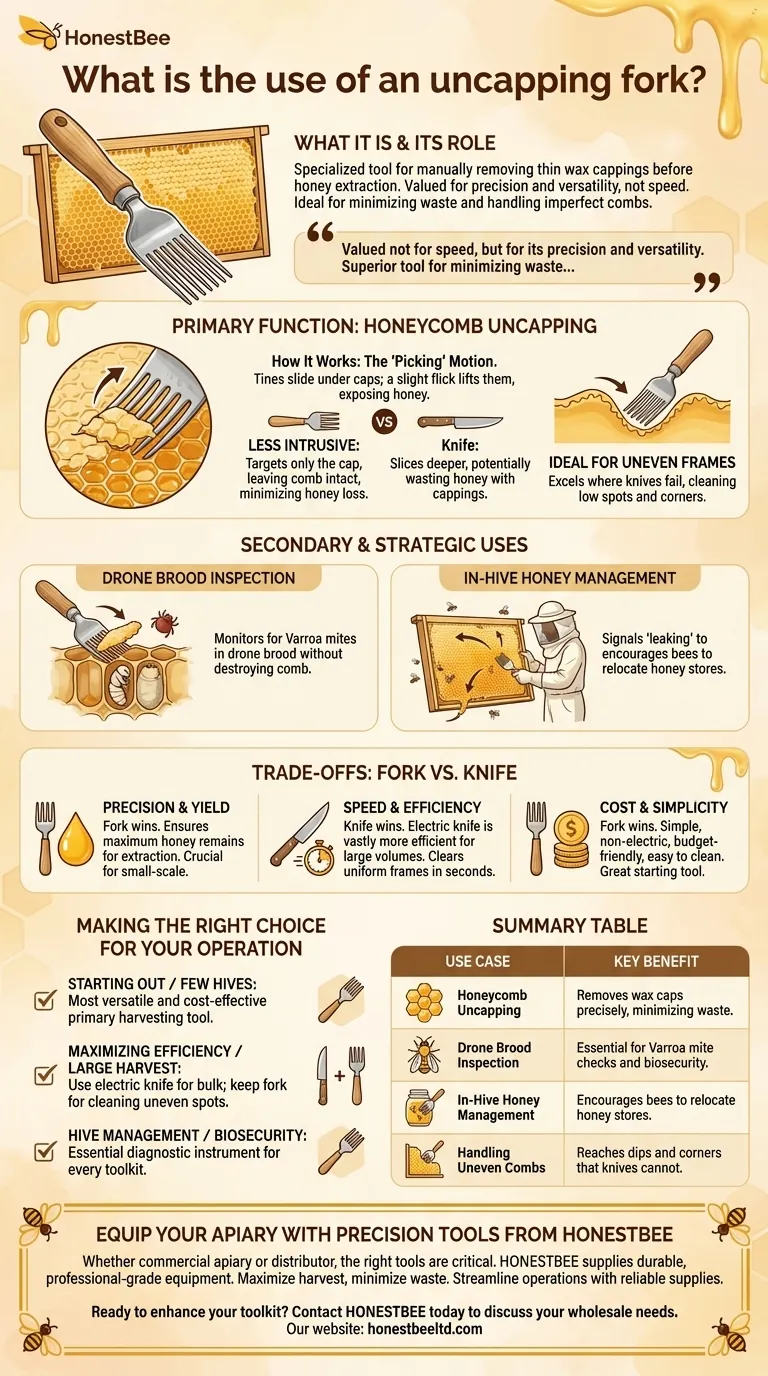
Related Products
- Professional Honey Uncapping Fork Tool with Customizable Tine Options
- Stainless Steel Pivoting Honey Uncapping Fork with Plastic Handle
- All-Stainless Steel Pivoting Honey Uncapping Fork for Beekeeping
- Professional Bent Tine Honey Uncapping Fork with Ergonomic Grip
- All Stainless Steel Double Sided Pivoting Honey Uncapping Fork
People Also Ask
- What is the first step in the honey extraction process? Master the Critical Art of Uncapping
- What are the advantages of an uncapping fork? Achieve Precision Honey Harvesting for Your Apiary
- How does an uncapping fork work, and what are its benefits? Achieve Precision Unsealing for Your Honey Frames
- What are the common methods used by small-scale beekeepers to uncap honey frames?
- What is the recommended practice when using plain knives for uncapping? Master the Two-Knife Method for a Perfect Harvest
